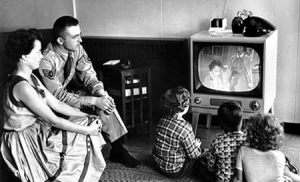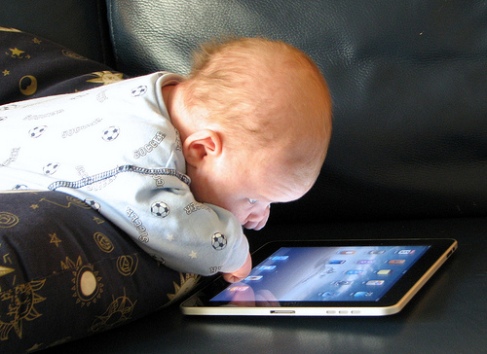In her Chapter entitled Advertising after the Network Era, Lotz discusses the various methods and techniques advertisers used in television throughout history. She describes how at first the advertisers were still empowered during the transition from radio, as shows might have still only had one sponsor. “The dominant commercial model of radio utilized a single sponsorship system in which a corporation paid all of the production costs of a show and was the only product or corporate entity associated with it.” (Lotz 156) However, she is quick to point out that the relationship between advertisers and networks changed rapidly with new industry conventions such as upfronts. “Various norms of the ‘television season’ and the timing for selling advertising time developed once magazine-format advertising established its dominance. The annual September debut of programs led to the related annual process of securing advertising commitments in the spring in what came to be known as the ‘upfront’ market.” (Lotz 158) Yet she does not stop there, as she delves further into what became a new convention during the post network era. She outlines how product placement and integration became a major part of the television medium and came into its own in the early 2000’s. “By 2005, many examples of paid, unpaid, basic, and advanced placement appeared across the networks.” (Lotz 168)
One show that has stirred up quite a bit of conversation in our class with regards to a range of issues is the Netflix produced show House of Cards. Advertising is another interesting facet of the conversation, as House of Cards has no direct sponsors based on the fact that it is completely financed and put out by Netflix. However, it does have it’s fair share of product placement. Whether its Kevin Spacey’s incessant need to relieve stress by way of playing Killzone 3 on his Playstation 3, or the ridiculous amount of Apple products on display being used by everyone, product placement is definitely a prominent part of the show. This is interesting to me because, as Erin has pointed out in class, in the case of most of these products, they are not payed for by their respective company’s to be advertised.

Underwood: “Hey, when was I supposed to betray that one guy?” Stamper: “Let me check my iPhone.” Underwood: “Wait, I found it on my iPad.” Stamper: “I’m going to go back to listening to my iPod then.” Underwood: “Cool, Ill be on my Mac Book.”
So why do we have unpaid product placement? As Lotz points out, it is a relationship of convenience. “In the case of unpaid placement, or what Twitchell refers to as ‘product subventions’, companies donate products needed on the set for reasons of verisimilitude–if a scene takes place in the kitchen, that set needs to be dressed with products that make it recognizable as a kitchen.” (Lotz 166) So in the case of House of Cards, which takes place largely within the realm of Congress and the White House, the show utilizes Apple products based on their perceived technologically advanced nature. This plays on the audiences perceptions that Apple products are equivalent with technological sophistication. Obviously everyone in politics would utilize Apple products because they are the most cutting edge tech available on the market. Or so we are meant to understand.
While Apple product placement makes sense with regards to what has become one of the most widely used and highly sought after brands, Sony is a much harder, more cumbersome sell. These placements are what Lotz describes as awkward additions which are highly noticeable to the viewing audience. “By contrast, an ‘inorganic’ placement calls attention to itself and does so in a way that not only exposes the constructed nature of placement but also breaks the viewer’s submersion in the narrative.” (Lotz 168) Unfortunately, in the case of the multiple Playstation brand placements, this was definitely the case. Every time I saw Kevin Spacey fumbling around with a Playstation controller as footage of Killzone 3 flashed on screen I could only shake my head. In one particular sequence Kevin Spacey happens upon a Playstation Vita (Sony’s new handheld gaming console) and is heard uttering in cringe worthy fashion “Is this a Playstation Vita?” These moments only served to alert me to the fact that I was watching a show with various commercial imperatives and capitalistic underpinnings, while completely jarring me out of the narrative cohesion the program does so well. When it comes to House of Cards, it has many utilization’s of product placement. Some that work. Some that don’t.

No Kevin Spacey, you clearly don’t understand what that controller or headset do. That’s just a video of Killzone 3 playing in front of you. You can go back to being ruthless again. I can believe that.
1. What experience as a viewer have you had with product placement?
2. Do you think this method of advertising has any affect on you?
3. Do you feel like any type of product placement can be “inorganic”, or do you think it generally meshes well with the given show?



